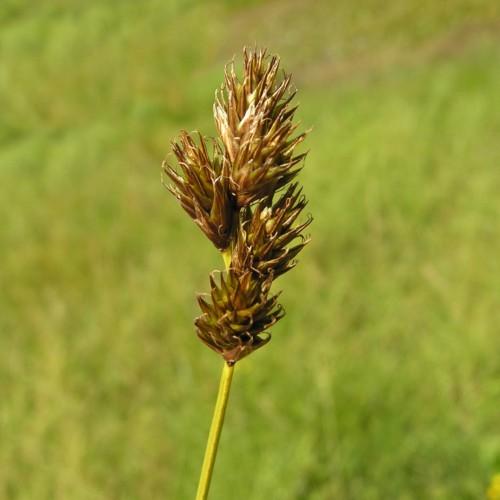
Oval Sedge
Carex ovalis
Also Known As - Eggbract SedgeWatering:
Minimal
Hardiness Zone:
Flowers:
Flowers
Sun:
full sun,part shade
Soil:
Sand
Fruits:
Fruits Ready In Fall
Leaf:
Yes
Growth Rate:
Low
Drought Tolerant:
Yes
Salt Tolerant:
Yes
Care Level:
Medium
watering
Few Seed Sedge should be watered regularly to help the plant remain healthy and vigorous. Generally, it should be watered about once per week, although more frequent watering may be necessary in times of extreme heat and/or drought. Water should be applied to the soil until the top inch is completely moistened. Allow the surface of the soil to dry out between waterings, as this plant does not tolerate soggy soil conditions. During the summer, additional supplemental waterings with a mister can help keep the foliage hydrated and lower the risk of leaf scorch.
sunlight
Few Seed Sedge (Carex oligosperma) is a plant species that prefers full sunlight. This perennial tends to grow best in areas that receive at least 5 to 6 hours of direct sunlight each day, though it can tolerate partially shaded areas as well. The best time of day for sunlight is during the morning and afternoon hours when the sun is shining at its peak intensity. In regions with hot summers, Few Seed Sedge may benefit from some afternoon shading to prevent wilting and sun scalding. Generally, this species does best when planted in an area that receives full sunlight for 4 to 6 hours per day.
pruning
In general, pruning for Few Seed Sedge (Carex oligosperma) should take place during late fall and winter. The plant should be cut back to around 6-8 inches (15-20 cm) above the ground. This will encourage vigorous new growth in the spring. Pruning should be done carefully and judiciously, taking care to remove only the dead tips of the stems and leaving the newer shoot tips intact. Additionally, pruning should only be done when the soil is dry, as wet soil can increase the chances of disease and infection. After pruning, old material should be properly disposed of, as it can also spread disease and pests.
